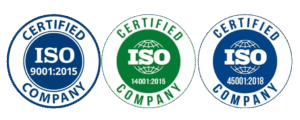packaging logistics is entering a new era. As Australia’s packaging regulation reforms take shape, logistics, warehousing and supply-chain operations must evolve to stay ahead. At Carewell Group Pty Ltd—offering packaging, industrial & safety supplies, logistics and 3PL services—this means more than stacking crates and shipping goods. It means building operations that anticipate regulatory expectations, circular-economy principles and new business models.
Why regulation is shifting the landscape
The catalyst is clear: the Australian Packaging Covenant Organisation (APCO) and the Department of Climate Change, Energy, the Environment and Water (DCCEEW) have signalled that Australia’s current co-regulatory packaging system is no longer fit for purpose. DCCEEW+2naturpac.org+2
Key themes shaping logistics:
- Packaging must be designed to be recycled, reused, recovered. DCCEEW
- Design decisions (materials, structure) will affect supply-chain cost and performance.
- Logistics operations (storage, transport, return flows) will increasingly need to support circular models rather than purely one-way outbound journeys.
As businesses face these shifts, packaging logistics becomes strategic — how you move, store, return and recover packaging matters.
What logistics operations must consider
Here are operational areas where packaging logistics needs to align with regulatory and circular-economy demands:
1. Packaging lifecycle and return flows
Instead of seeing packaging simply as outbound, logistics must incorporate returns, reuse and recovery. For example: crates, pallets or containers designed for multiple trips, systems for their return and refurbishment, and warehousing/storage that supports reuse rather than disposal.
2. Material-efficient transport and storage
Packaging that is designed for reuse or better recovery often means different volumes, weights, shapes. Logistics must adapt: storage layouts, handling equipment, transport fleets might need re-engineering to support lighter, reusable or recyclable formats.
3. Traceability and data systems
As regulation evolves (and as APCO’s 2030 Strategic Plan indicates), data about packaging placed on market, recovered, recycled content etc will matter. documents.packagingcovenant.org.au Logistics operations will need to capture this data—where packaging traveled, how many reuse cycles it had, when it was returned for recycling.
4. Collaboration across the value-chain
Logistics providers like Carewell will increasingly collaborate with packaging manufacturers, recyclers and brand owners. The operations link between packaging design, transport, collection and recycling becomes tighter. If packaging isn’t compatible with logistics flows or recovery systems, the circular model fails.
5. Flexibility and future-proofing
Regulation will continue evolving. Systems built rigidly for current models may struggle. Logistics operations should aim for flexibility: ability to integrate new return-logistics models, adapt to increased packaging reuse, track material flows, support new handling systems.
Why this matters for Carewell Group and our clients
Since Carewell Group covers packaging supply, industrial & safety, logistics and 3PL services, you’re uniquely positioned to support clients through this transition. Here’s how:
- You can extend your services beyond “ship packaging” to “manage packaging lifecycle” – including return logistics, reuse programmes, tracking and recovery.
- You can future-proof operations: your logistics and 3PL capabilities become a value proposition for clients worried about packaging regulation.
- You can reinforce your brand promise (excellence, innovation, preserving environment) by aligning operations with circular-economy models and regulatory readiness.
- You can help clients avoid cost shocks: packaging redesign, logistic rearrangements, compliance burdens—all this can be smoother if logistics is built for the future now.
Practical steps to align logistics now
Here are actionable steps you and your team (and your clients) can implement to prepare logistics operations for the reform-driven future:
- Audit current packaging logistics flows: map inbound/outbound, returns, storage, handling, disposal of packaging. Identify inefficiencies, non-reusable formats, one-way flows that will be less sustainable.
- Design logistics for reuse and return: evaluate how packaging formats could support multiple uses, how return logistics could be built (reverse logistics), how warehousing/storage needs to adapt for returned packaging.
- Upgrade data systems: ensure you capture packaging lifecycle data: formats, material types, reuse counts, recovery disposition. This supports compliance, business insight and client value.
- Train logistics and operations teams: ensure staff understand packaging as more than shipping material—they’re handling assets, cycles, returns and recyclable streams.
- Partner with packaging suppliers and recyclers: logistics doesn’t operate in isolation—coordinate with the packaging design and end-of-life recovery chain so that operations align with what packaging expects to do (reuse, recycle).
- Scenario-plan for regulation: consider what happens if regulation introduces new recovery rates, new return-programmes, or fees/penalties for non-recycled packaging. Logistics costs and processes may change—prepare now.
Challenges and how to navigate them
Of course, aligning packaging logistics with evolving regulation and circular models isn’t without challenge. Some common issues & how to approach them:
- Cost/Investment: Return-logistics, new storage systems, tracking systems cost money. Approach: build business case with clients: reduced packaging waste, improved reuse, stronger sustainability credentials.
- Complexity: Handling returns, refurbishing packaging, managing data adds complexity. Approach: pilot programmes, gradually scale, partner with experts.
- Changing supply-chain partners: Some suppliers, carriers may not be ready for new models. Approach: communicate early, embed expectations, collaborate.
- Regulation uncertainty: Some reforms aren’t final yet. Approach: build flexible system—design for transition, not just current state.
The upside: a strategic advantage
Logistics operations aligned with packaging regulation and circular economy principles can deliver:
- Operational efficiency: Reduced waste, better asset use (packaging being reused), lower disposal cost.
- Client differentiation: You become a logistics partner that offers “circular-ready packaging supply & management” not just shipping.
- Regulatory readiness: You help clients avoid penalties, disruptions or last-minute redesigns.
- Brand alignment: With sustainability being more important, you align operations with your brand promise and your client’s brand expectations.
Final thoughts
The future of packaging logistics is not just faster trucks or bigger warehouses—it’s smarter, circular, aligned with regulation and built for reuse and recovery. For companies like Carewell Group, the opportunity is substantial: you’re not just moving packaging—you’re managing packaging assets for the lifecycle, for the brand, for the planet.
Start now: audit your flows, upgrade systems, train your team, partner smart. The regulatory wave is coming, and logistics aligned with it won’t just survive—it will thrive.
If you’d like, I can draft a Logistics-Ready Checklist for Circular Packaging Compliance (with warehousing, return-flow, data tracking items) tailored for your operations.









